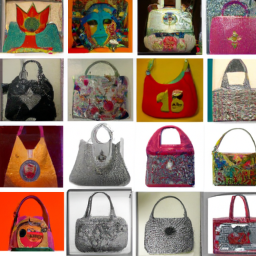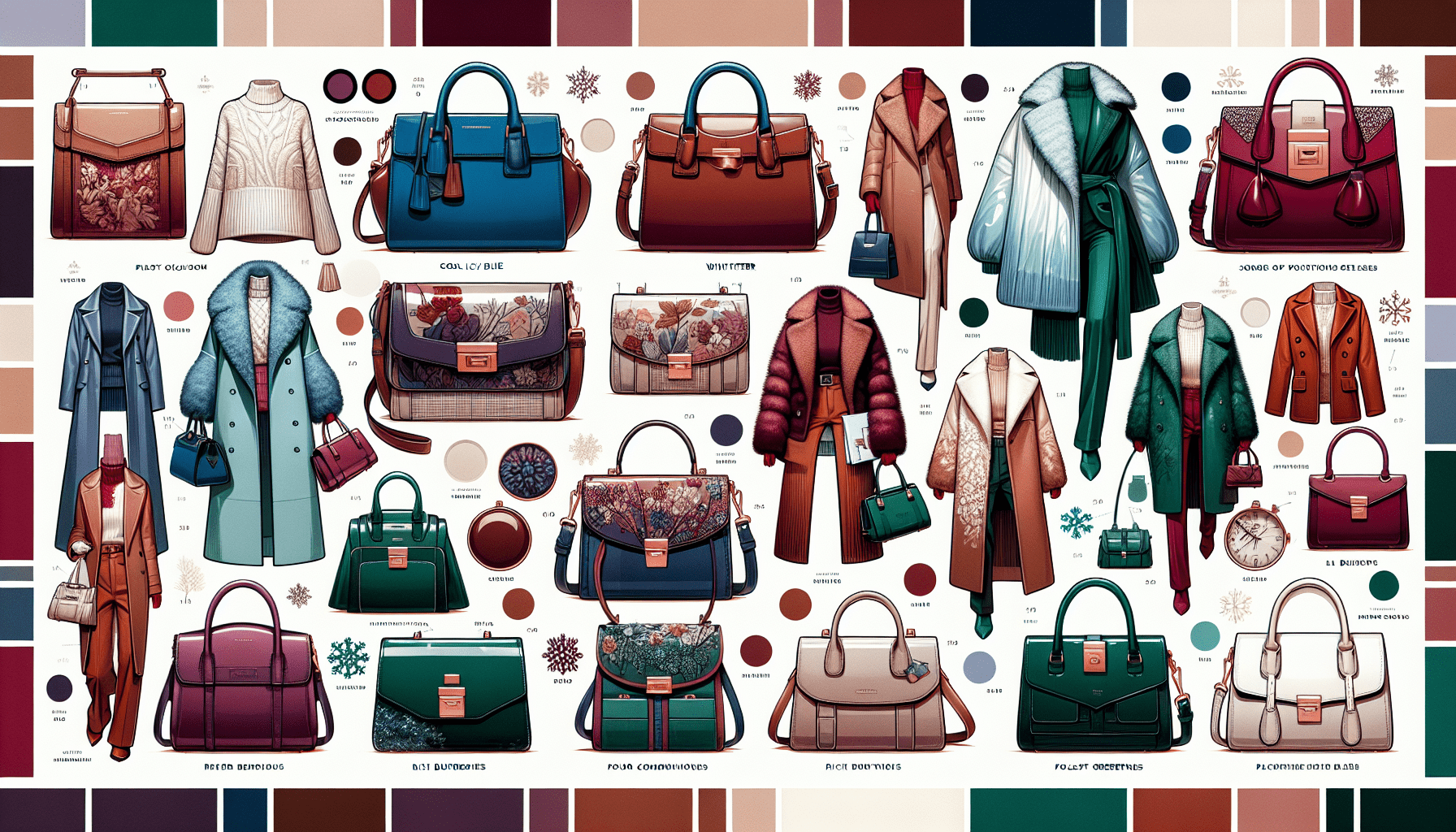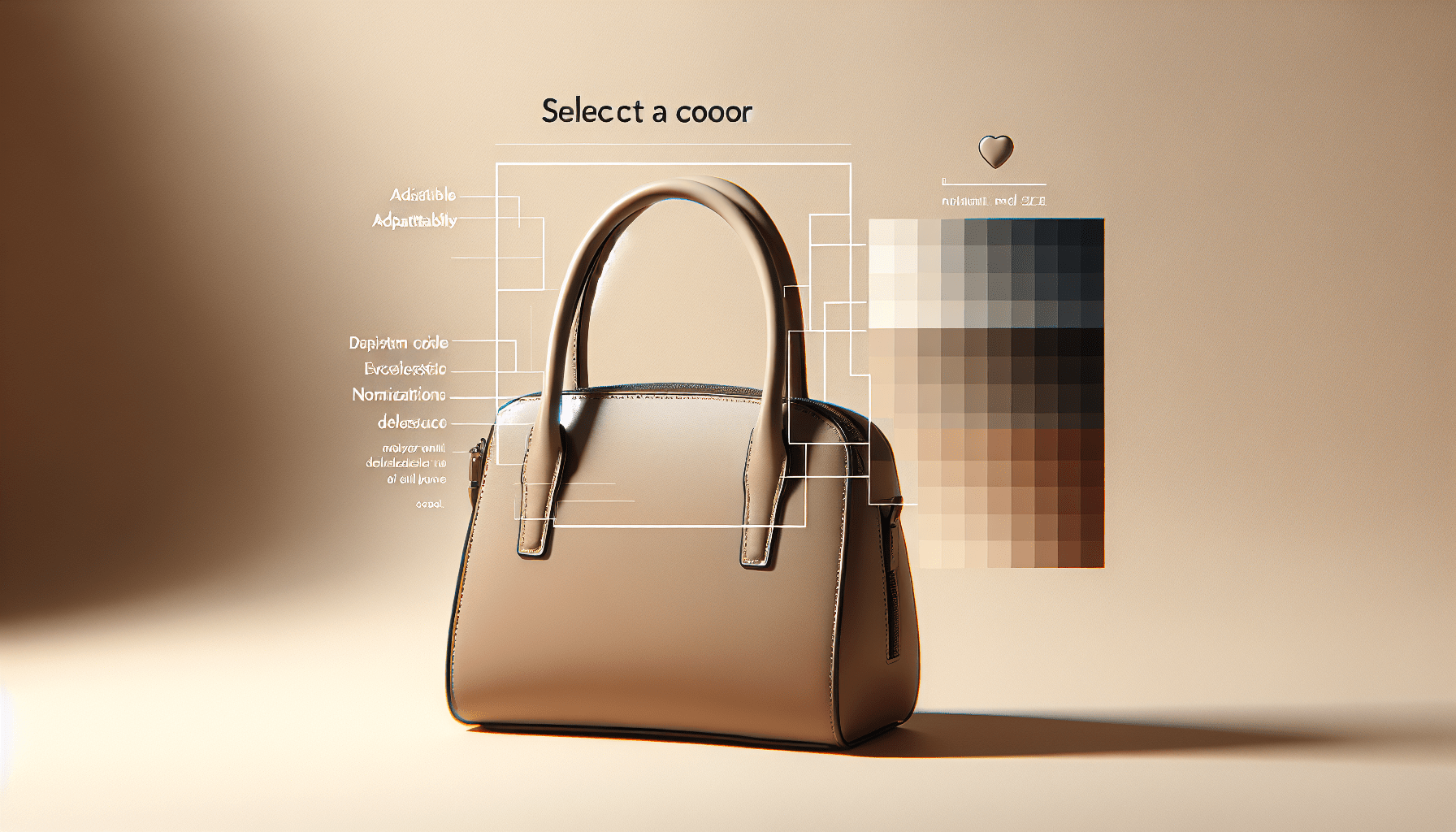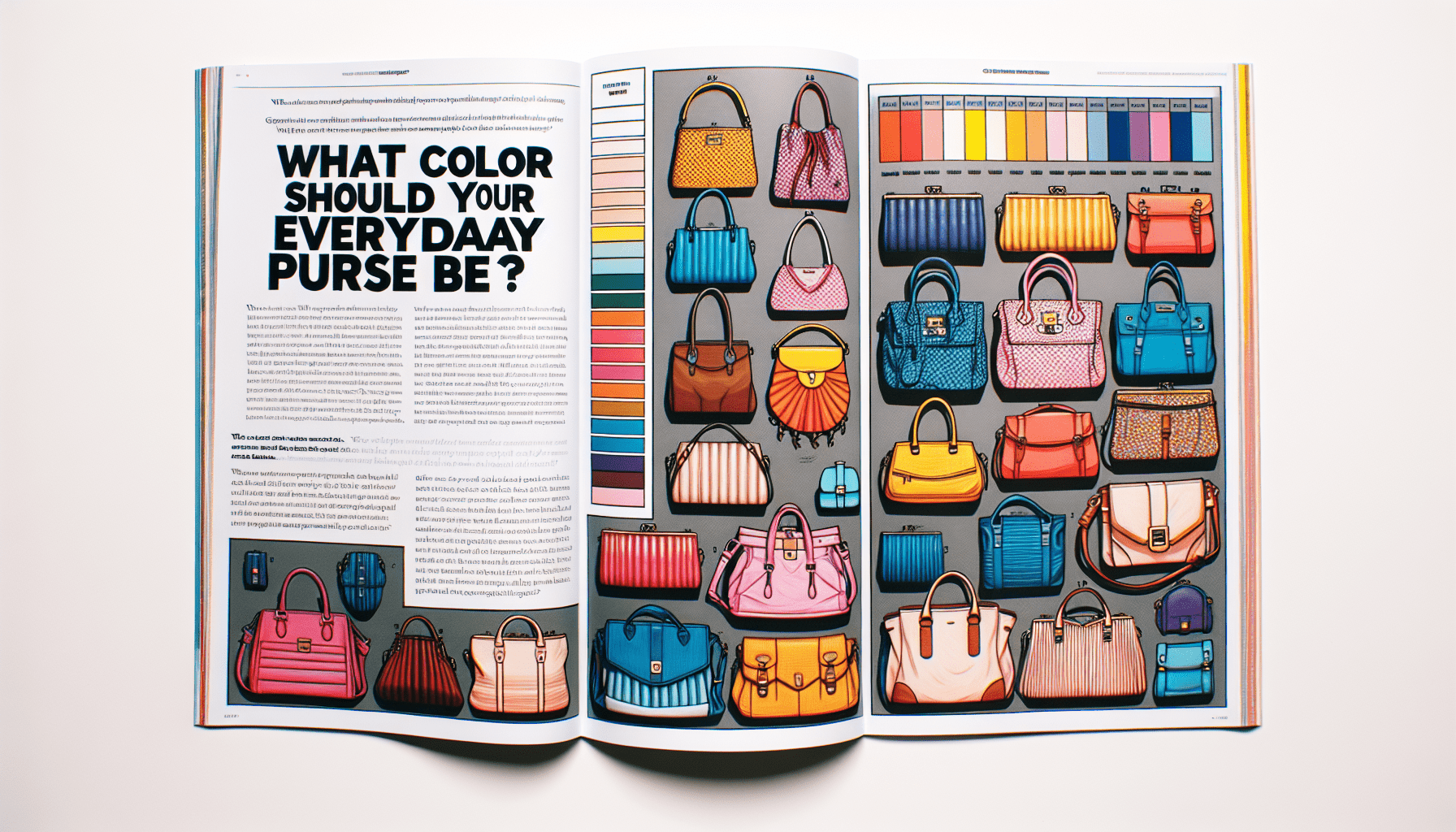The Evolution of Handbag Design: A Historical Overview
So, you’re curious about the history of handbag design? Well, you’re in for a treat! In this article, we’ll take a stroll down memory lane and explore the evolution of handbag design throughout history. From humble beginnings to stylish fashion statements, you’ll be amazed by the fascinating journey of this essential accessory.
But that’s not all! We’ll delve into the various factors that influenced the changes in handbag design, such as societal shifts, technological advancements, and cultural trends. You’ll discover how different styles and materials were adopted over the years, and how these choices reflected the changing needs and desires of fashion-conscious individuals like yourself. So, get ready to uncover the secrets behind your favorite arm candy, and prepare to be amazed by the incredible world of handbag design!
The Evolution of Handbag Design: A Historical Overview
Handbags have been a staple accessory for centuries, serving both practical and fashionable purposes. The design of these beloved accessories has evolved significantly throughout history, reflecting the cultural and societal changes of each era. From the ancient Mesopotamian pouches to the contemporary smart handbags of today, let’s take a journey through time to explore the early origins and transformations of handbag design.
Early Origins of Handbags
Ancient Mesopotamian Pouches
The history of handbags can be traced back to ancient Mesopotamia, where small pouches were used by both men and women as early as 2500 BCE. Made of animal hides and decorated with intricate embroidery, these pouches were often used to carry personal belongings and were attached to belts or worn around the waist. They were not only practical but also served as a status symbol, with more elaborate designs indicating wealth and social standing.
Egyptian Beaded Bags
In ancient Egypt, handbags took a more decorative turn with the emergence of beaded bags. These small purses were adorned with intricate beadwork and made from materials such as ivory, gold, and gemstones. They were predominantly used by women and often featured symbolic designs, such as lotus flowers or animal motifs. The Egyptian beaded bags were not only fashionable accessories but also held religious significance, as they were used to carry amulets and other sacred objects.
Medieval Bags and Purses
During the medieval period, handbags took on a different form. Instead of being worn around the waist, they were carried by hand or attached to belts. These bags were typically made of leather, silk, or velvet and were embellished with elaborate embroidery, pearls, and precious stones. They were not only used to carry personal belongings but also served as a symbol of wealth and social status. The designs varied depending on the region and fashion trends of the time.
Renaissance and Baroque Era
Embroidered Velvet Handbags
In the Renaissance era, handbags underwent a significant transformation. Embroidered velvet handbags became popular among aristocratic women, featuring intricate designs that showcased the craftsmanship of the time. These bags were often adorned with pearls, gold thread, and precious gemstones, making them highly luxurious accessories. The embroidered velvet handbags of this era were considered a fashion statement and were often gifted as precious heirlooms.
Enamel and Pearl Clutch Bags
As the Baroque era unfolded, enamel and pearl clutch bags gained popularity. These small handheld bags were often decorated with elaborate metalwork, enameling, and an abundance of pearls. They were designed to be elegant and feminine, with delicate clasps and intricate detailing. The opulent and ornate nature of these bags reflected the grandeur and excesses of the Baroque period, with fashion becoming an important social indicator.
19th Century Innovations
Carriage and Chatelaine Bags
In the 19th century, handbag design saw notable innovations. The rise of industrialization and the advent of new transportation methods, such as carriages and trains, led to the development of specialized bags. Carriage bags, also known as traveling bags, were designed to be practical and durable, accommodating the needs of travelers. These bags were often made of leather and featured compartments for storing essentials.
Another significant development during this time was the introduction of chatelaine bags. These bags were worn suspended from a belt or chain and were used to carry small items such as keys, sewing tools, and cosmetics. Chatelaine bags were typically made of ornate metalwork and were considered an essential accessory for fashionable women.
Reticule Bags with Silk Drawstrings
Reticule bags, popularized in the early 19th century, became a must-have accessory for women during this period. Made of delicate fabrics such as silk or satin, these small drawstring bags were used to carry personal items, including handkerchiefs, snuff boxes, and money. Reticule bags were often embellished with embroidery, lace, or beadwork, reflecting the romantic and feminine fashion trends of the time.
Art Nouveau and Art Deco Influences
Whiting & Davis Metal Mesh Bags
The early 20th century saw a shift in handbag design, with the influence of the Art Nouveau and Art Deco movements. Whiting & Davis, a renowned American company, revolutionized handbag design with their metal mesh bags. These bags, made by linking small metal rings together, were not only visually stunning but also highly functional. They allowed for flexible movement and came in various shapes and sizes, catering to different occasions.
Cartier’s Vanity Cases
Another key innovation during this period was the introduction of vanity cases by the prestigious jewelry house, Cartier. These luxurious cases, crafted in precious metals and adorned with gemstones, were specifically designed to hold cosmetics and other essential beauty items. The vanity cases represented the epitome of elegance and sophistication, appealing to the glamorous lifestyles of the elite.
Mid-20th Century Revolution
Hermès Birkin Bag
The mid-20th century brought about a handbag revolution, with designers creating iconic and timeless pieces that are still coveted today. One such example is the Hermès Birkin bag, created in the 1980s. Named after actress Jane Birkin, this handbag quickly became synonymous with luxury and exclusivity. Made of high-quality leather and featuring impeccable craftsmanship, the Birkin bag embodies timeless elegance and remains one of the most sought-after handbags in the world.
Chanel 2.55 Flap Bag
Another iconic handbag that emerged during this period is the Chanel 2.55 flap bag. Designed by Coco Chanel in 1955, this handbag revolutionized the way women carried their belongings. The 2.55 flap bag introduced the concept of shoulder straps, allowing for hands-free convenience. Its quilted leather, interlocking CC logo, and signature chain strap have made it a symbol of timeless style and sophistication.
Contemporary Handbag Design
Luxury Brands and Collaborations
In the modern era, luxury brands have continued to push the boundaries of handbag design. Collaboration between high-end fashion houses and renowned artists or designers is a common trend. These collaborations infuse uniqueness and creativity into handbag designs, blending fashion with art. Limited-edition handbags featuring exclusive prints, materials, or detailing have become highly collectible items for fashion enthusiasts and collectors alike.
Sustainability and Eco-Friendly Materials
With increasing awareness of environmental issues, sustainability has become a significant focus in handbag design. Many designers are now opting for eco-friendly materials such as vegan leather, recycled fabrics, and organic fibers. Sustainable handbags are not only fashionable but also reflect a commitment to ethical and responsible practices. These eco-conscious designs cater to the growing demand for more environmentally friendly fashion choices.
Innovative Features and Technology
Smart Handbags with Integrated Charging
As technology advances, handbags have become more than just a fashion accessory. Smart handbags with integrated charging capabilities have emerged, allowing users to charge their devices on the go. These bags feature built-in power banks and USB ports, enabling convenient and hassle-free charging. The integration of technology into handbag design showcases the evolving needs and lifestyles of modern individuals.
Anti-Theft and GPS Tracking Systems
In response to growing concerns about security, handbags now incorporate anti-theft features and GPS tracking systems. Anti-theft technology includes features such as slash-proof straps, RFID-blocking pockets, and locking mechanisms to ensure the safety of personal belongings. GPS tracking systems enable users to locate their handbags in the event of loss or theft, providing peace of mind and a sense of security.
Influence of Fashion Icons
Grace Kelly and the Kelly Bag
Fashion icons have played a pivotal role in shaping handbag design. One such example is Grace Kelly, who popularized the Hermès Kelly bag. In 1956, Grace Kelly, then the Princess of Monaco, used the bag to shield her pregnant belly from the paparazzi. This moment catapulted the Kelly bag to international fame, making it one of the most iconic and desirable handbags of all time. Its classic and elegant design remains a symbol of timeless grace and sophistication.
Jane Birkin and the Birkin Bag
Another fashion icon that influenced handbag design is Jane Birkin. Her chance encounter with Hermès CEO Jean-Louis Dumas on a flight led to the creation of the iconic Birkin bag. Jane Birkin shared her need for a spacious yet stylish handbag, and the rest is history. The Birkin bag became a symbol of luxury and exclusivity, with long waiting lists and high price tags. Its association with Jane Birkin’s effortless chic style solidifies its status as a fashion icon.
Cultural Significance of Handbags
Symbolic Representation of Status
Handbags have long been used as a symbol of status and wealth. Throughout history, the design, material, and craftsmanship of a handbag have represented one’s social standing. From the intricately embroidered pouches of ancient Mesopotamia to the luxurious Birkin bag, handbags have been a marker of prestige and privilege. The desire to own a coveted handbag transcends time and continues to be a cultural phenomenon.
Expression of Personal Style
Handbags have also become an extension of one’s personal style and self-expression. With a myriad of designs, colors, and shapes to choose from, individuals can select a handbag that reflects their personality and complements their overall look. Whether it’s a sleek and minimalist tote or a bold and colorful statement piece, handbags allow individuals to showcase their unique style choices and preferences.
Conclusion
The evolution of handbag design is a fascinating journey through history, reflecting the cultural, societal, and technological changes of each era. From the ancient Mesopotamian pouches to the smart and technologically advanced handbags of today, these accessories have come a long way. Handbags have not only served practical purposes but have also been powerful symbols of status, fashion, and self-expression. As fashion continues to evolve, we can expect handbag design to continue pushing boundaries and capturing the essence of our ever-changing world. So, whether you’re carrying a timeless Birkin bag or a smart handbag charged with the latest technology, embrace the rich history and artistry that lies within these beloved accessories.





